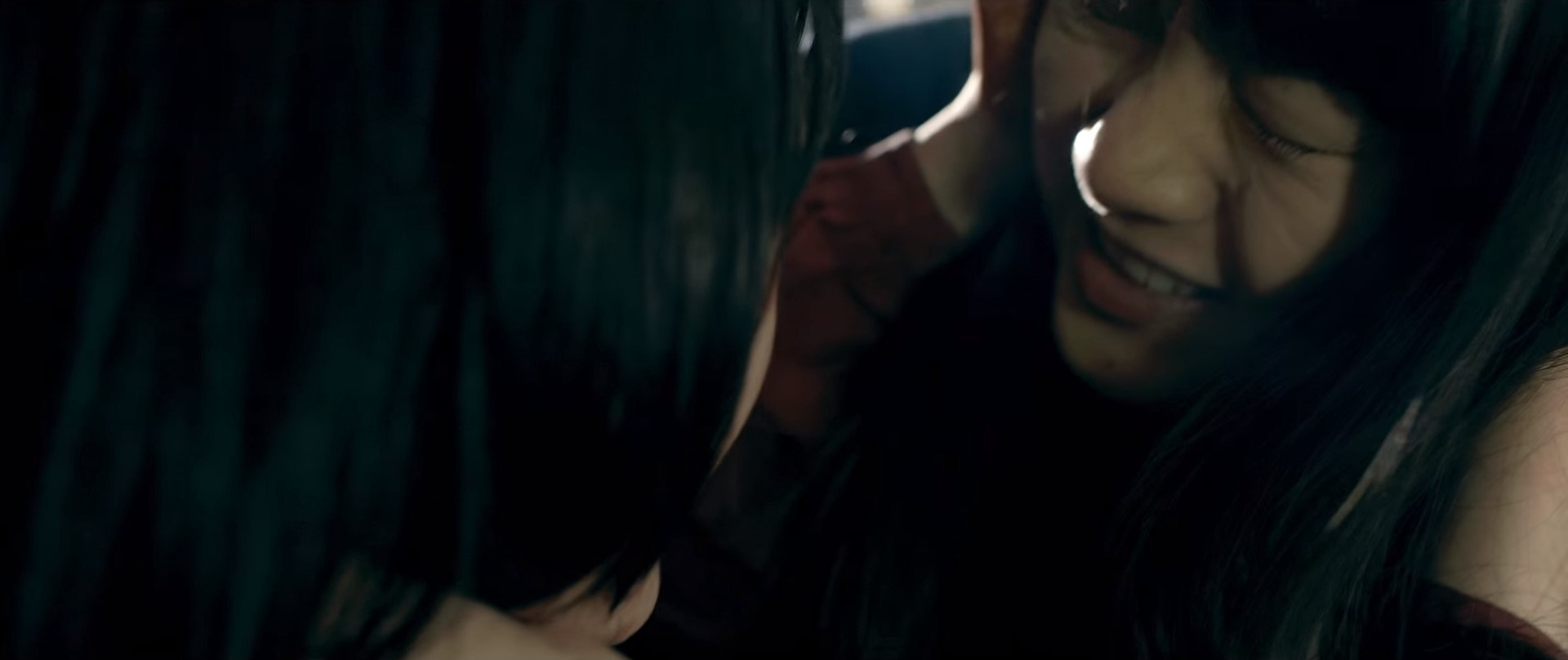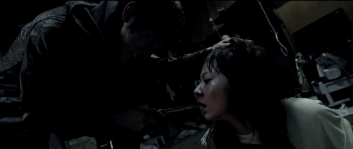Introduction
Splatter, gore, horror, … . It wouldn’t be surprising if the next signifier one associates with these three words would be Japan. Japan has crafted some of the most crazy splatter and gore narratives to date.
One of the driving forces of the genre is of course the legendary Yoshihori Nishimura, who directed narratives like Tokyo Gore Police (2008) and Kodoku: Meatball Machine (2017) and who, as a special effects artist and supervisor, helped many narratives with their special effects. But luckily there is also new talent on the horizon: the director Katsumi Sasaki and special effects artist Yoshinari Dohi.
Midori-Impuls will release a Mediabook of the Mukuro-impuls later this year. And Katsumi Sasaki will be a guest at this years JFFH in Hamburg.
Review

Apartment inferno. One day, three guys meet up to kill a high-school girl. Later that day, one guy finds a confined girl in that apartment. The supposedly murdered girl becomes her food.
Just like A Mother. A daughter sees her mother Naomi off. While she receives mail from her at the beginning, the letters soon stop. Suddenly she receives a phone-call from someone who knows more about the whereabouts of her mother.
Sweet Home Inferno. Nozomi is born in a very strict religious family. One day, they confine her on the suspicion that she is a devil and that, in order to safe her, they need to violently exorcise her.

Despite the explicit, violent and often disturbing images in Just like a Mother – images sensibly evoking the impact of certain violent acts – the narrative never enters true horror territory. Instead, by focusing on the symbolic mother-daughter relation, the narrative is turned into a revenge fantasy that should be read as a protest against the violent masturbatory enjoyment of male subjects (Psycho-note 1). And while the message of Just like A Mother is clear, due to the simplicity of the narrative thread, the conclusion nevertheless lacks the cathartic nature it aimed to have, as the pacing issues and the limited length of the narrative fail to underline the enjoyment of mother and daughter in a sensible way (Narra-note 1).

Contrary to Just Like a Mother, which focused on the male enjoyment in sexual and non-sexual violence, Sweet Home Inferno zooms in on the dis-functioning of the family-system and the excess of enjoyment of a female subject, i.e. the younger sister (Narra-note 2). And while the narrative clearly shows how problematic religious indoctrination can be – grounding the violence within a symbolic context of religion, the less successful application of practical effects keeps the narrative from framing the violence that result from this indoctrination in a disturbing way. Furthermore, the same problem of Just Like A Mother is present here as well, as the narrative conclusion – the revenge part – lacks the catharsis the narrative tries to stage.

But instead of focusing on the glaring narrative problems, we should understand these narratives as cinematographical experiments that exhibit how – with a limited budget – one can show (the impact of) violence in a more or less believable way and as a way for Katsumi Sasaki to display this talent. These narratives do not aim to evoke the either traumatic or cathartic subjective effects of violence, but to amuse us with its visuals and the framing of violence or gore as such (Music-note 1). And this is most evident in Apartment Inferno, a narrative – the plot is subordinate to the visuals – that with its great use of colour and visual composition composes the most impressive scene, e.g. the dance scene, in this trilogy.

The narratives of the Mukuro trilogy are framed with a blend of fixed shots, fluid following shots, and rougher moving shots (cine-note 1). While there are differences in how each narrative is framed, the rougher moving shots tend to underline the subjective state of one or more main characters, frame the gore, and the impact of the violence. As implied before, the way Sasaki framed his narratives reveals a promising aptitude to compose great visuals and skill to use practical effects, courtesy of Yoshinari Dohi, to frame – even if it is over-the-top – gore and violence in a generally plausible way (cine-note 1).
If one views Katsumi Sasaki’s Mukuro Trilogy solely as experiments focusing on the framing of gore and violence, then these three short-movies are very visually pleasing. But as cinematographical narratives, they ultimately fail to utilizes the full potential of the narrative and have a lasting and sensible impact. But even if these narratives are ultimately flawed, they do underline Katsumi Sasaki’s potential to become one of the best directors of the genre. We are looking forward to his future narratives.

Notes:
Psycho-note 1: While mother and daughter go against male masturbatory enjoyment, one could argue that their revenge remains in the same phallic register.
Psycho-note 2: The excess of enjoyment that the younger daughter displays goes beyond the symbolic coordinates of the act of exorcising and is, in this respect, the sole disturbing element in this narrative.
Narra-note 1: Some spectators might have problems with the sudden shift – from trauma to revenge – in the narrative and the comedic punch-line that finishes the narrative. Concerning the former, the shift causes the mutilated mother forget the pain of the self-inflicted mutilation and the daughter to forget the trauma of being raped.
Cine-note 1: In Apartment Inferno and Sweet home inferno fixed shots are often semi-fixed and characterized by a slight tremble. In some instances such (semi-)fixed shots are used to frame the violence.
Cine-note 2: With plausible, we aim to underline that the framed violence never enters the domain of the ludicrous. In the case of Just Like a Mother, the violence can even become disturbing.
Music-note 1: The three narratives feature an abundance of music. While the music fits Apartment inferno perfectly, music, as a support for the visuals, sometimes feels overused in the two other narratives. Instead of giving scenes more power, the music tends to diminish the impact of the violence on display.